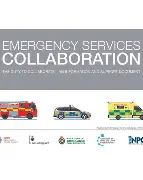- Teacher: Rhys Maddock
- Teacher: Lisa Marks
- Teacher: Howard Jones
- Teacher: Lisa Marks
- Teacher: Dean Freeman
- Teacher: Lisa Marks
In this unit, learners will
Understand how the Civil Contingencies Act and emergency planning play a major role in preparing emergency services to respond effectively to major incidents.
The learners will develop knowledge of the agencies involved in emergency planning, the need for this and the key aspects of civil contingency planning for major incidents.
- Teacher: Howard Jones
- Teacher: Lisa Marks
In this Unit Learners will demonstrate an understanding of the roles and
responsibilities of statutory and non-statutory services at emergency
incidents. They will identify the benefits and challenges of collaborative
working. They will review a recent major incident. Learners will
demonstrate the skills and knowledge by participating in a practical
scenario.

Learning outcome 1 The learner will: understand collaboration between uniformed services
The learner must:
• identify the statutory and non-statutory services that may work together in a major incident
• describe the roles and responsibilities of each service at a major incident
• describe the benefits and challenges of working collaboratively in the uniformed services
Learning outcome 2 The learner will: evaluate a collaborative approach to a major incident
The learner must:
• analyse a major incident
• describe how it was resolved
• explain theories of team building
Learning outcome 3 The learner will: participate in a joint services collaboration exercise
The learner must:
• participate in a joint services team activity involving a major incident
• participate in a joint services collaboration exercise
• produce a debrief at the conclusion of the exercise
- Teacher: Howard Jones
- Teacher: Lisa Marks
- Teacher: Lisa Marks
- Teacher: Steven Thompson
- Teacher: Howard Jones
- Teacher: Lisa Marks
